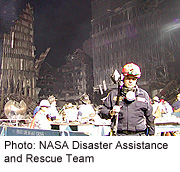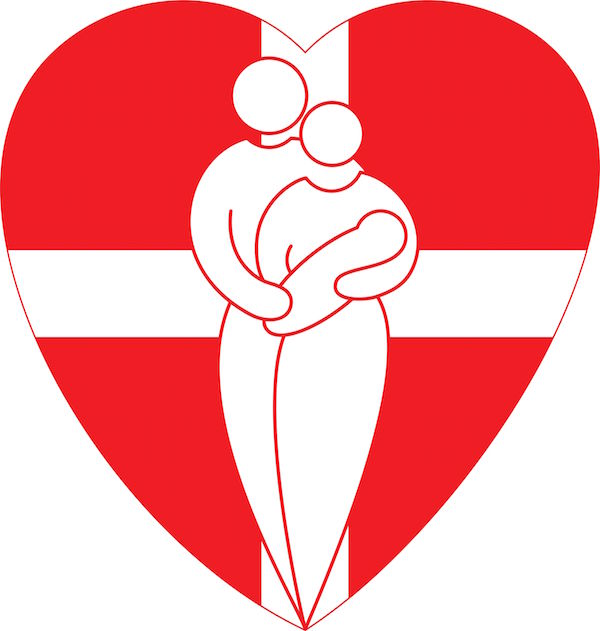
WEDNESDAY, Sept. 7 (HealthDay News) — Sean Callan, a stone mason in New York City, was working just seven blocks from the World Trade Center when he heard the explosion of the first plane hitting the North Tower on Sept. 11, 2001.

He and other workers dropped their tools and raced toward the sound. Callan soon found himself in the South Tower, steering fleeing workers from the crippled building hit by the second plane. When the structure started to groan and creak, he ran for the exit, feeling rubble and debris — some of it human bodies — raining down on him as the tower collapsed.
For the next 31 days Callan volunteered at what became Ground Zero, the site where nearly 2,800 people were killed. And over a two-year period, he spent a total of 19 months at “The Pit,” slicing steel, cutting concrete, hauling away debris in buckets — and inhaling volumes of toxic dust.
In 2003, Callan was diagnosed with mesothelioma, a type of lung cancer normally associated with exposure to asbestos. Two men working alongside him at Ground Zero were also diagnosed with the cancer. Both have died.
Ten years after the terrorist attacks, cancer is still not on the government’s official list of ills caused by exposure to the Twin Towers debris. Experts note that a decade is too short a time period to link a disease like cancer — which can have many causes, both genetic and environmental — to such a specific source as 9/11 toxins.
But while mesothelioma usually has a longer latency period, Callan, now 59, was told by health experts that “for the initial period I was down there as a volunteer … I was exposed to a lifetime of toxins.”
Prior to 9/11, Callan added in a gravelly voice bearing the sound of his native Northern Ireland, he had been “blessed with good health.”
The health effects of the Twin Towers’ collapse was the focus of research published last week in The Lancet that showed first responders and workers at the site continue to suffer physical and mental problems. And, for the first time, the research showed a possible increase in their risk for cancer.
Seven years after 9/11, male firefighters who were at the World Trade Center site after it was attacked had a 10 percent increased risk of cancer compared with the general population, and a 19 percent increased risk compared to firefighters who hadn’t been sent there, researchers reported.
Their study also detected a slightly increased risk for certain types of cancer, including stomach, colon and non-Hodgkin lymphoma. But, curiously, people who had been near the disaster site had a 58 percent decreased risk of lung cancer — probably because of the good health typical of most first responders, the study authors speculated.
So, while a decade isn’t enough time to make a definitive link to cancer, the study authors believe the increased incidence is likely a result of carcinogens in the dust that filled the air after the attacks.
Responders don’t qualify for federal aid for health problems
The conclusion is in marked contrast to a report issued by the federal government in July that found there still wasn’t enough evidence to determine whether the dust and smoke caused cancer in rescue or recovery workers or New York City residents who lived near the site. The finding means that people — such as first responders — with cancer diagnoses that they attributed to the 9/11 attacks don’t qualify for federal benefits to treat or compensate them for their illness.
Part of the reason for the July finding was that there had been only 18 published research studies on the World Trade Center attack that mentioned cancer, and only five of those were peer-reviewed and they yielded mixed findings, said Dr. John Howard, director of the National Institute for Occupational Safety and Health. A second review of a possible link between cancer and the World Trade Center attack will be done next year, he added.
A decade, however, is enough time to track the various other illnesses that have developed since the Twin Towers crumbled.
“At the 10-year point after 9/11, we’re still seeing a great deal of persistent disease in the first responders, the police, the firefighters, the construction workers,” Dr. Philip Landrigan, senior author of one of the Lancet studies and chairman of preventive medicine at Mount Sinai Medical School in New York City, told HealthDay.
Landrigan’s examination of more than 27,000 rescue and recovery workers found that nearly 28 percent had asthma, 42 percent had sinusitis and 39 percent had gastroesophageal reflux disease, or GERD. The respiratory and digestive troubles are likely the result of the noxious cloud that hung over the disaster site, entering people’s airways, causing inflammation and scarring, and burning its way into the esophagus, the study concluded.
“These people swallowed that very, very caustic dust which … was extremely alkaline. It was described as inhaling Drano in powdered form,” Landrigan said.
Earlier this year, Mount Sinai researchers noted an increase in “sarcoid-like” granulomatous pulmonary disease in first responders after 9/11. This disease causes inflammation in various organs, including the lungs, and is thought to be precipitated by environmental toxins.
Many suffer from permanent lung damage, experts say
Another recent study — this one by the chief medical officer of the New York City Fire Department — found that respiratory conditions accounted for the lion’s share of increased disability retirements among city firefighters in the seven years following 9/11.
Then there are these findings from the World Trade Center Health Registry, maintained by the New York City Health Department. Five to six years after the attacks:
- 10 percent of adult enrollees in the registry reported they had developed asthma, with most diagnosed in the first 16 months after 9/11. The rate of new asthma was highest (12 percent) among rescue and recovery workers who worked on the “debris pile” on 9/11.
- 19 percent of adult enrollees reported post-traumatic stress symptoms — about four times the rate typically seen among U.S. adults.
- Six to seven years after the attacks, four times as many firefighters and twice as many emergency medical service workers had below-normal lung function for their ages as they did before 9/11.
Many rescue workers also suffer from gastroesophageal reflux disease, in which acid and other contents of the stomach spill up into the esophagus.
“[Damage] was not limited just to the respiratory tract but also to the gastrointestinal tract,” said Dr. Marilynn Prince-Fiocco, associate professor of internal medicine at Texas A&M Health Science Center College of Medicine.
That could be the result of actually swallowing “particulate irritants.” Or the infamous “World Trade Center cough” could make people reflux, added Prince-Fiocco, who is also a pulmonologist/critical care physician at Scott & White Hospital in Temple, Texas.
First responders also have experienced a dramatic decline in lung function — declines that persist to this day. This, added to the expected decline in lung function with age, could presage more problems down the line, said Dr. Len Horovitz, a pulmonary specialist with Lenox Hill Hospital in New York City.
“I would be worried into the future about an increased incidence of COPD [chronic obstructive pulmonary disease], chronic bronchitis, emphysema and maybe even other inflammatory lung disorders,” he said. “These people are already vulnerable.”
When it comes to gauging the health effects of exposure to the Twin Towers debris, Dr. Michae
l Crane, director of the World Trade Center health program at Mount Sinai Medical Center in New York City, said, “We can’t rule anything out.”
As for Callan, the stone mason, he is still working. And though he lives in New York City, he’s constantly on the road — going where the jobs are. And he’s on chemo — a pill a day.
“It’s been tough to come to terms with the debilitating impact this has had on my ability to work,” he said. “I have difficulty breathing, moving. I just don’t have the stamina any more.”
Then he added, “There are days — never mind getting out of bed — I don’t want to turn my head. I live my life literally one day at a time.”
Coming tomorrow: How the 9/11 attacks affect, to this day, younger Americans.
More information
To learn more about the health effects of the 9/11 attacks, visit the World Trade Center Health Registry.
To read HealthDay’s story on the psychological toll of 9/11, click here.

